The environment and the burning of traditional fossil fuels is an extremely poignant topic these days and rightly so. The need to stop burning fossil fuels has never been greater.
Coupled with the cost of traditional fuel sources, alternatives for heating fuel has never been greater. One such alternative that has gained much traction over the years is biomass, so read on to find out all you need to know.
Understanding Biomass Boilers and Stoves
Biomass refers to plant matter, like wood, used as fuel or converted into biofuels. It’s renewable because it can be replenished quickly, making it much more environmentally friendly and of much less impact compared to traditional fossil fuels.
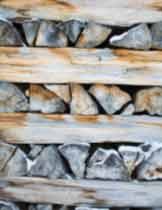
Pile of logs for burning
Biomass boilers and stoves burn dry organic matter such as logs or wood pellets to generate heat and hot water. They’re also much more efficient than other traditional systems, potentially saving up to £580 annually on energy bills compared to solid fuel, oil, or electric systems.
Understanding Biomass Boilers and Stoves
Traditionally, burning wood and biomass for heating and cooking was inefficient, with much of the warmth lost up the chimney. Modern biomass stoves and boilers, however, are vastly improved, converting around 70% of fuel into useful heat, with some pellet stoves reaching up to 90% efficiency. These systems can be as automated as modern fossil fuel boilers, with controls like thermostats and timers.
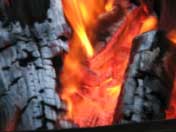
Burning timber
There are two main types of biomass heating systems:
- Boilers: Exclusively used for heating water, connected to your hot water and central heating system.
- Stoves: Standalone units providing heating to a single room or attaching to a back plate to heat water as well.
Common fuels include:
- Logs: Cut from trees, seasoned for a year before use to reduce moisture content, widely available but bulky.
- Wood chips: Byproduct of saw mills, less common in domestic systems.
- Wood pellets: Made from timber waste, densified for easier storage and consistent, efficient burning.
Other fuels like straw, sawdust, and grains are also used. While logs require manual loading, some systems can automatically feed pellets and chips into the burner to keep it functioning for long periods without anyone having to feed it.
Installing Biomass Heating
If you have a central heating system, a biomass boiler could be a suitable addition to your home. Seek advice from your installer on different models. Ensure installation is done by a HETAS accredited installer, preferably also MCS accredited for eligibility for government Renewable Heat Payments (if any are on offer, many of these schemes have now closed).
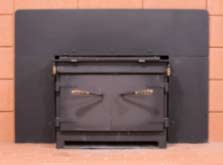
Wood burning stove
Biomass Heating Installation Checklist
When thinking about or installing a biomass system, you will need to consider the following:
- Type of System: Choose between a stove or boiler. Only systems with a back plate qualify for funding through Renewable Heat Premium Payments and Renewable Heat Incentive (if they’re still in operation).
- Home Insulation: Maximise efficiency savings by ensuring proper roof and wall insulation. If you home is lacking, then think about getting it installed
- Current Heating Fuel: Potential savings vary based on the existing fuel type. Homes on the gas network may be eligible for Renewable Heat Incentive payments or other schemes if they are still in operation which they may not be.
- Fuel Storage Space: Ensure adequate storage space for wood fuel near the delivery point to avoid inconvenience and having to transport long distances.
- Ventilation: Proper ventilation is necessary to remove smoke. Consider installing a lined flue into an existing chimney.
- Planning Permission: Check if planning permission is required, especially for flue installations in specific situations or listed buildings or areas such as conservation areas.
- Safety Regulations: Comply with building and safety regulations by using a HETAS accredited installer. Regulations may vary by region.
- Smokeless Zone Areas: Verify if your neighbourhood is in a smokeless zone, which may restrict wood burning in certain appliances.
For more information on regulations, visit:
- Part L of the Building Regulations, England
- Building Regulations for Northern Ireland
- Section 3 of the Technical Handbooks, Scotland
Installation Duration
The time to install a biomass heating system varies based on its size and complexity. Combining installation with other building work can save money but may affect the duration.
In most situations the easiest installation method is for new builds or extensions, where a biomass system can be installed as part of the construction, so if you are considering either of these and also a biomass system it’s well worth combining the 2.
However as you may imagine on the opposite end of the scale is retrofitting a biomass system to an existing property, especially an old property. This can involve considerable work and in turn cost so this also needs to be considered in terms of overall cost.
Biomass Heating Installers
To qualify for government Renewable Heat subsidies, use an MCS accredited installer. For Green Deal financing, opt for a Green Deal installer. As we have commented, many of these initial schemes have now closed or ended but it’s well worth doing some research as there may be some forms of scheme offering financing.
Overall costs vary: a log stove, including installation, is around £1500 using an existing chimney (around £2000 – £2500 without), while a biomass pellet stove can range from £3000 upwards.
A medium-sized pellet boiler with a feed mechanism costs approximately £8,500, including installation, flue, and 5% VAT. Manually fed log systems are slightly cheaper.
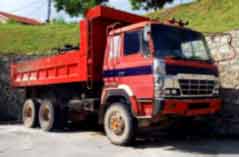
Red tipper lorry
Biomass Heating System Fuel Costs
Pellet costs vary depending on quantity. Buying in bulk, like several tonnes delivered by tanker, can be as low as £1240 per tonne. Buying smaller quantities, like 10-15kg bags, is pricier.
Log costs are generally cheaper than pellets but vary by locality due to high transport costs. A rough range is around £70 – £90 per tonne. To find a fuel stockist nearby, check the Log Pile or Big Barn websites.
Wood chips can in some cases be cheaper again, roughly around the £60 per tonne mark, but again this can vary depending on where you are in the UK.
Biomass Heating Maintenance
For both stoves and boilers, regular ash removal is absolutely essential, typically once a week but not exceeding once a day. Some systems self-clean, but manual cleaning requires boiler shutdown.
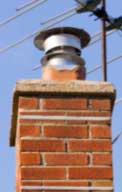
Chimney with flue poking out the top
Soot removal from flue and chimney should occur biannually and again is absolutely essential to avoid any forms of chimney fires and the likes. Annual system checks, costing approximately £150, are also essential.
The Advantages of Biomass Heating
Switching to biomass could save you up to £600 annually on heating bills, depending on your current fuel. Here are some additional benefits:
- Lower Carbon Footprint: Biomass is carbon neutral, releasing only the carbon dioxide it absorbed while growing. Local sourcing minimises carbon emissions from fuel preparation and transportation.
- Reduce Landfill Waste: Wood pellets utilise timber waste, reducing landfill overflow and methane emissions.
- Protection from Oil Price Fluctuations: Biomass systems reduce reliance on oil, shielding you from price hikes in the oil market.
Despite the obvious advantages listed above, there are a few downsides in that despite all the eco advantages you are still essentially burning a fossil fuel so it’s not 100% eco-friendly, you’re still contributing to greenhouse gas issues and some systems can be quite inefficient.
If you are looking to renew or replace your current heating system then biomass heating is certainly a decent option to look at and one that you should certainly consider carefully. Although not 100% eco-friendly due to the fact that it is still a fossil fuel, the fact that it is renewable does go a fair way in offsetting this fact.

